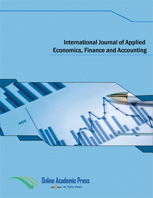Crowding-in or crowding-out? The linkage between private investment and public debt of India using symmetric and asymmetric cointegration methodology
DOI:
https://doi.org/10.33094/ijaefa.v16i2.992Keywords:
Crowding, Domestic credit, GDP, Interest rates, NARDL approach, Private investment, Public debt.Abstract
The study aims to examine the asymmetric effect of public debt on private Investment in India. For examining the asymmetric effect of public debt on private Investment in India, this study used the NARDL approach. The study used annual time series data for the period of 1980 to 2019. Results from the symmetric co-integration model demonstrate that there is a long-term relationship between private investment and measures of public debt, with the exception of external debt and private investment, which exhibit an asymmetric reaction to changes in long-term public debt. The long-run asymmetries show that positive changes in debt do not crowd out private investment while negative changes in debt crowd in private investment. The present study on asymmetric public debt-investment link may have important policy implications. The long-run asymmetries indicates that negative shocks in debt have more crowding effects in India which shows that reduction in borrowings may lead to growth in private investment in long-run. The present study is different from the previous studies and is contributing to the existing literature in two ways. The first study focused on the role of interest rates in affecting private investment in India and looked at this hypothesis in Nonlinear ARDL co-integration relationship.
Downloads
Published
Issue
Section

This work is licensed under a Creative Commons Attribution-NonCommercial 4.0 International License.




